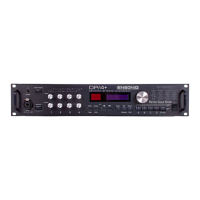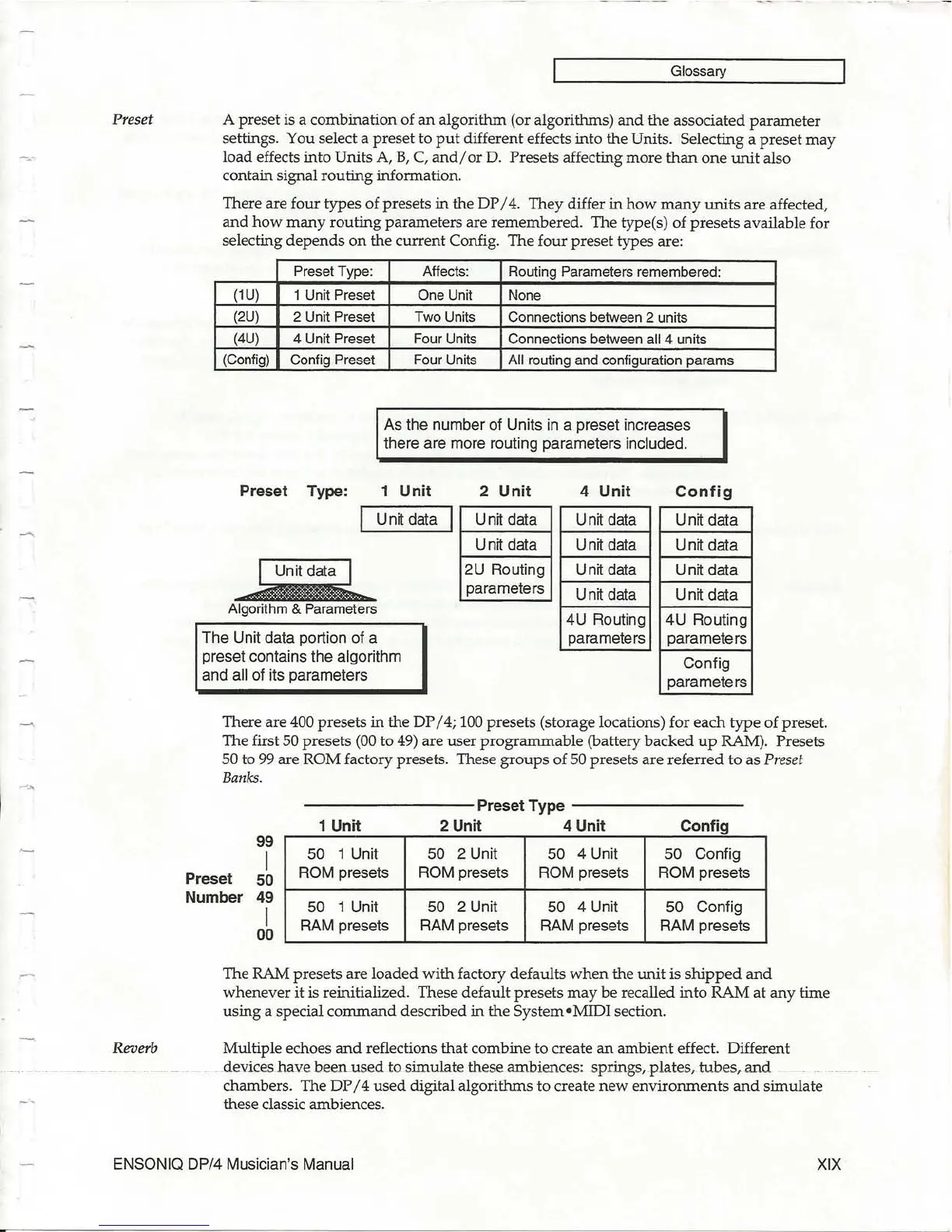-
--
Preset
Reverb
Glossary
A preset is a combination of
an
algorithm (or algorithms)
and
the associated
parameter
settings. You select a
preset
to
put
different effects into the Units. Selecting a
preset
may
load effects into Units A,
B,
C,
and/
or
D. Presets affecting
more
than
one
unit
also
contain signal
routing
information.
There are four types
of
presets
in
the
DP
/
4.
They
differ
in
how
many
units
are affected,
and
how
many
routing
parameters
are
remembered
. The type(s) of
presets
available for
selecting
depends
on
the
current
Config. The four
preset
types are:
Preset Type:
(1
U)
1 Unit Preset
(2U) 2 Unit Preset
(4U)
4 Unit Preset
(Config) Config Preset
Affects:
Routing Parameters remembered:
One Unit
None
Two Units
Connections between 2 units
Four Units
Connections between
all 4 units
Four Units
All routing and configuration params
As the number of Units
in
a preset increases
there are more routing parameters
included.
Preset Type: 1 Unit
2 Unit 4 Unit
Config
Unit data
The Unit data portion of a
preset contains the
algorithm
and all of its parameters
Unit data
Unit data
2U Routing
parameters
Unit data Unit data
Unit data
Unit data
Unit data
Unit data
Unit data Unit data
4U Routing 4U Routing
parameters
parameters
Config
parameters
There are 400 presets
in
the
DP
/
4;
100 presets (storage locations) for
each
type
of preset.
The first
50 presets (00 to
49)
are user
programmable
(battery
backed
up
RAM). Presets
50 to 99 are ROM factory presets. These
groups
of 50 presets
are
referred
to
as
Preset
Banks.
---------
Preset Type
---------
1 Unit 2 Unit 4 Unit Config
99
I
Preset
50
50
1 Unit 50 2 Unit
50
4 Unit
50
Config
ROM presets
ROM presets ROM presets
ROM presets
Number 49
I
00
50
1 Unit 50 2 Unit 50 4 Unit
50
Config
RAM presets RAM presets RAM presets RAM presets
The RAM presets are
loaded
with
factory defaults
when
the
unit
is
shipped
and
whenever
it
is reinitialized. These default presets
may
be
recalled
into
RAM
at
any
time
using
a special
command
described
in
the System • MIDI section.
Multiple echoes
and
reflections
that
combine to create
an
ambient effect. Different
devices
have
been
used
to simulate these ambiences: springs,
plates,
tubes,
and
chambers. The
DP
/ 4
used
digital algorithms to create
new
envirorunents
and
simulate
these classic ambiences.
ENSONIQ DP/4 Musician's Manual
XIX

